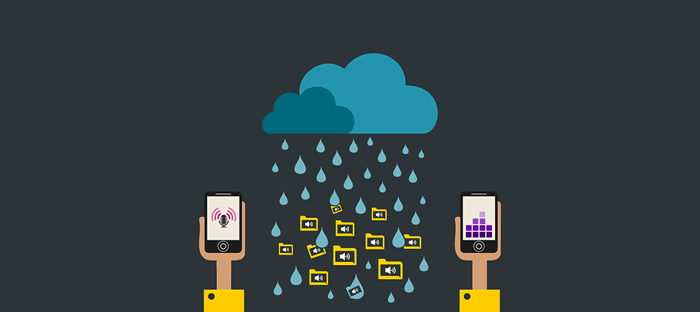Creating Content to Help Clients Get Comfortable with Change

Sometimes as marketers, we’re not selling a product or service, but the very notion of change itself.
Selling change is really tough – and even more so when the audience is conservative.
So it was for us when our client, First American Equipment Finance, approached us with a challenge: How could we convince their banking clientele to adopt a new technology platform?
First American was in the process of switching from a traditional, paper-based documentation system to a more advanced electronic documentation system. They firmly believed that embracing this new platform would transform their entire industry, and we agreed with them.
However, that didn't mean the change would be easy.
First American knew their clients weren’t necessarily familiar with the ins and outs of electronic documentation (or “e-documentation,” as it’s commonly called). Moreover, the people they needed to bring on board were financial institution C-suite executives who tend to be hyper-focused on minimizing risks. So before First American could make the change, they needed to convince their clients that e-documentation is a great – and a safe – idea.
I’m happy to report that in the end, our campaign was highly successful, and First American clearly established themselves at the forefront of this major industry paradigm shift. So how did we get their clients comfortable with this enormous change?
We set about creating content that would do the heavy lifting for us.
Here's how.
Step 1: We identified the nature of the challenge
In a regular marketing campaign, you explain the benefits of your product or service and let them speak for themselves. But in this case, explaining the benefits of the new technology wasn’t going to be enough. The banks and lenders perceived e-documentation as less secure than traditional paper documentation, and they were highly concerned about exposing themselves to undue risk.
We knew that throwing a bunch of information at them and simply arguing the opposite point would get us nowhere.
Step 2: We chose the strategy
We decided instead to show them that we were as skeptical as they were – perhaps even more so.
We knew that if we could meet the audience where they were – in a place of uncertainty and resistance – this would help them realize that we understood (and even shared) their concerns. They would no longer feel the need to convince us of the dangers and pitfalls of the proposed changes. In fact, we’d sidestep the whole mentality of “us vs. them” entirely. We’d show them we were on their side and just as concerned as they were.
Step 3: We wrote a white paper
We didn't want to start creating content without a clear strategy. For this group, a white paper felt like the right tool. We needed to be official, respectable, and credible – and we considered a white paper to be the most “academic” of our content options.
Unlike their more casual ebook counterpart, B2B white papers are marketing communications documents that use selected facts and logical arguments to build a case for a particular course of action. First American was already using white papers to present their thought leadership, so it was a natural choice to use a white paper to make a business case for change.
Step 4: We sounded the alarm
But our white paper couldn’t just jump to our intended conclusion. We needed to acknowledge the client's likely objections. To do this, we closely examined each potential obstacle that might prevent the client from embracing the e-documentation platform.
- We walked them through the new technology with clear, compelling infographics. This brought the issue down to earth and made it easier to consider and discuss.
- We referenced legal opinion from an industry expert to outline how to ensure e-documentation will stand up to legal challenges. We made sure to give the name and firm of the attorney, and we included details on every applicable legal risk.
- We referred to state and federal commerce regulations affecting security and confidentiality. We cited the code names and numbers (“According to Uniform Commercial Code (UCC) section 9-105…”), and then we explained in plain English how the regulations impacted e-documentation.
- We made it easier to perform due diligence when shopping for e-documentation vendors by including a checklist of questions to ask. Here we were not only agreeing it made sense to be concerned, but also taking it a step further by turning those concerns into “action items.”
Step 5: We reached the only possible conclusion
After detailing the variety of possible obstacles we might encounter with e-documentation, we were also able to explain how each obstacle could be overcome – or why it wasn’t really an obstacle in the first place.
By convincing ourselves, in the course of the paper, that e-documentation is safe and secure, we compelled the audience to agree.
Then we sent the white paper to clients, launched the new technology platform ... and waited.
As client feedback started to trickle in, two things became clear:
- Their clients appreciated the methodical way we raised and defused possible challenges of the new technology.
- Their clients particularly appreciated that First American “spoke their language.”
As a result, First American was able to smoothly transition to the new technology without the push back they had anticipated.
The next time you need to “sell” change, try this: Get more upset than your clients are, and then patiently explore the reasons why the change is actually for the better. I believe there is no better vehicle for this than by creating content with a smart, strategic approach – ideally, a white paper that’s stuffed with facts, figures, and authority. It worked for us!





